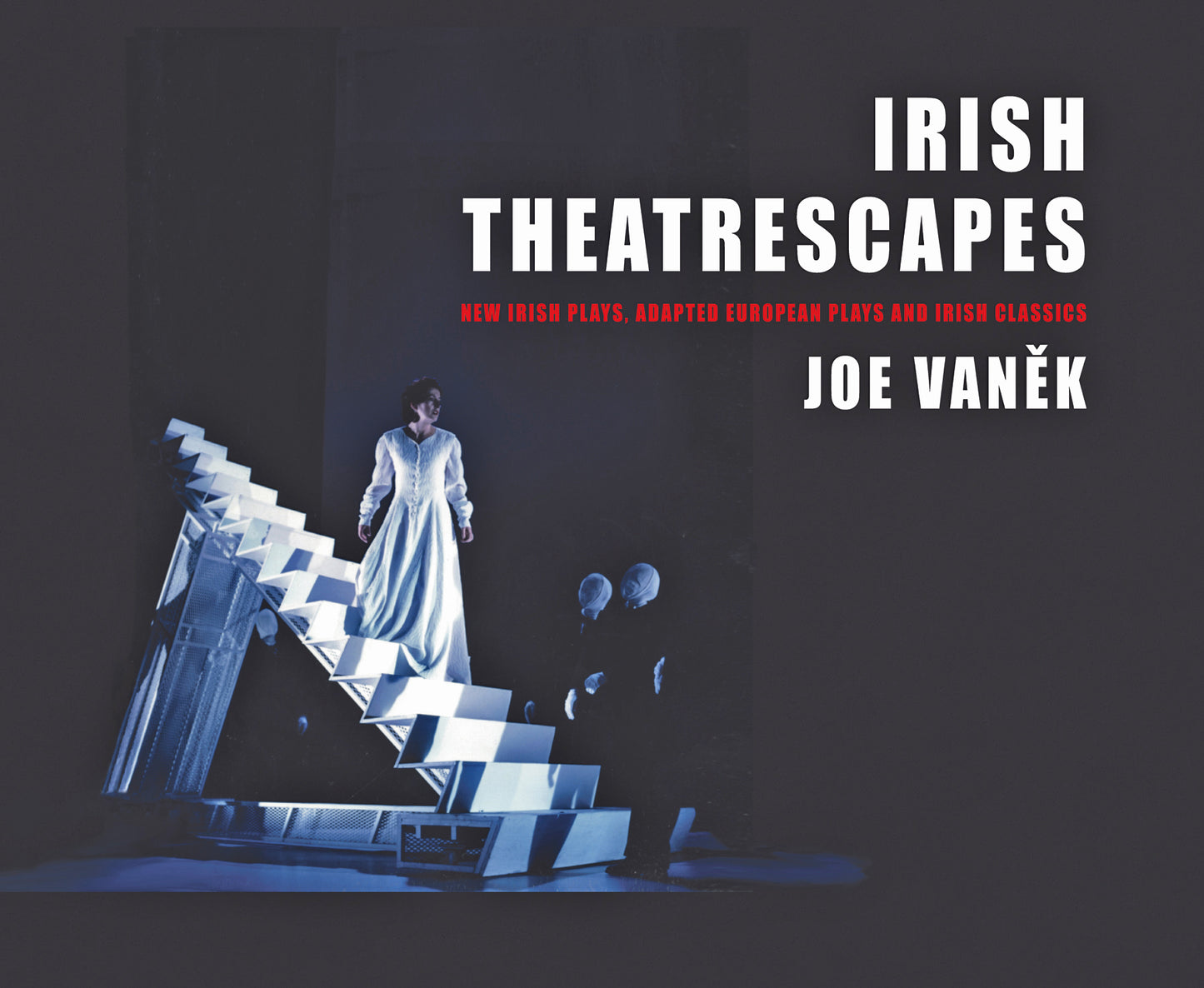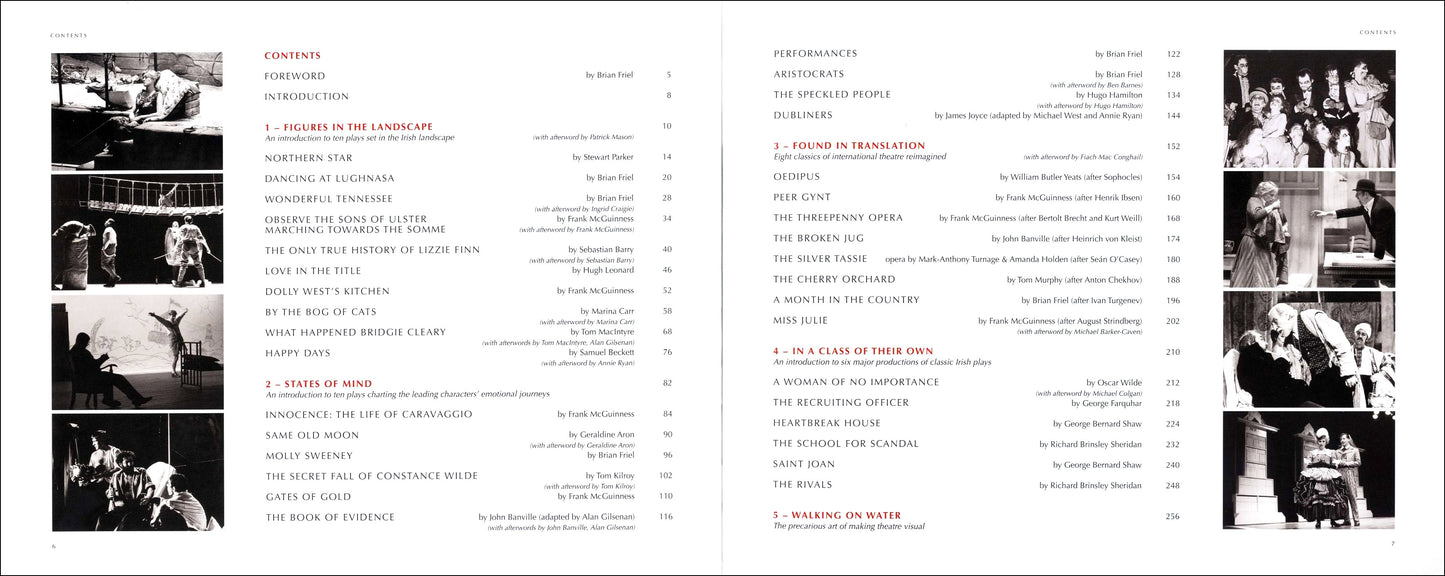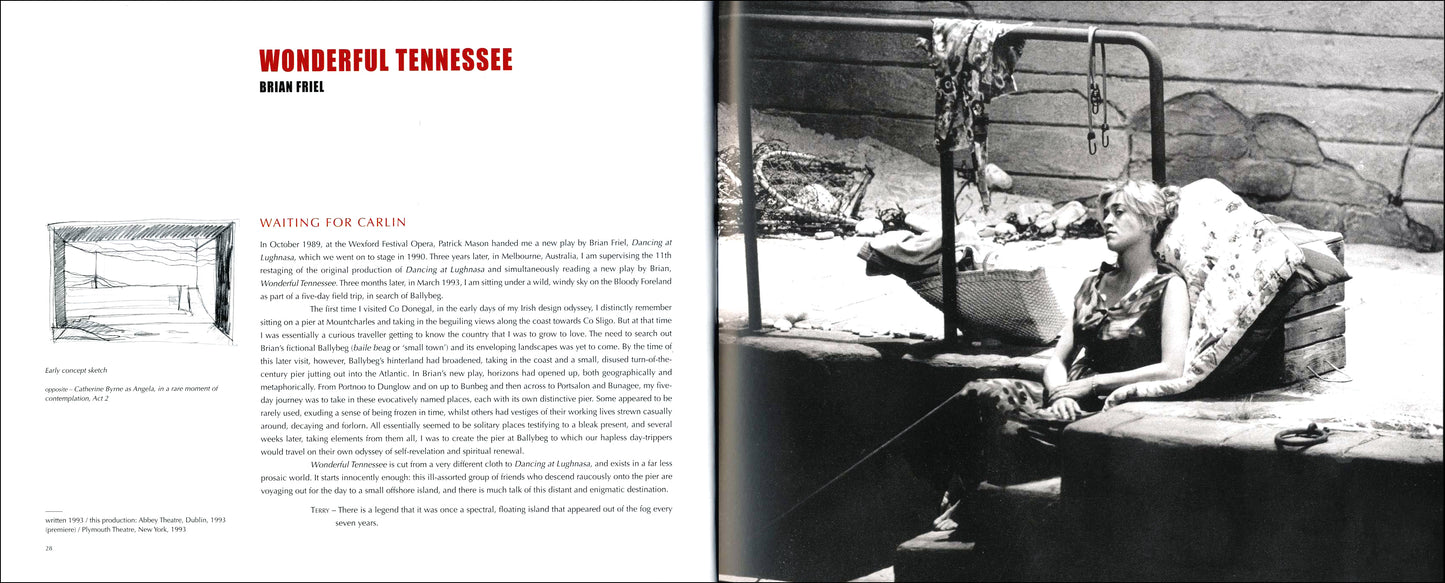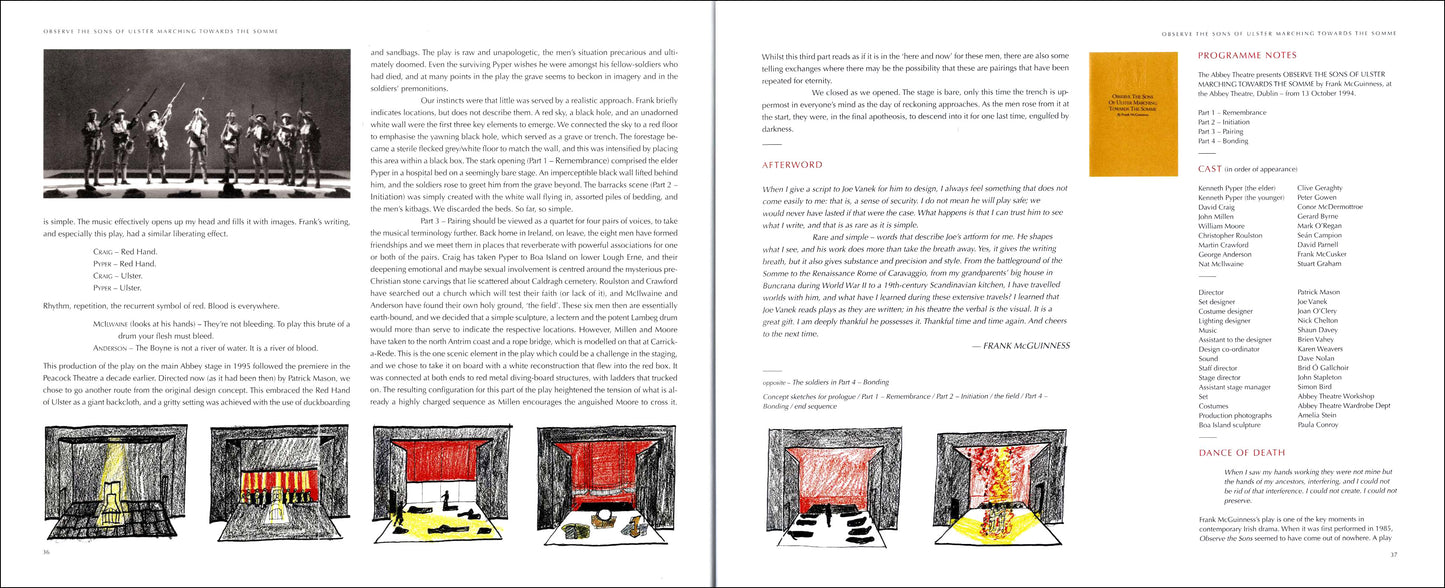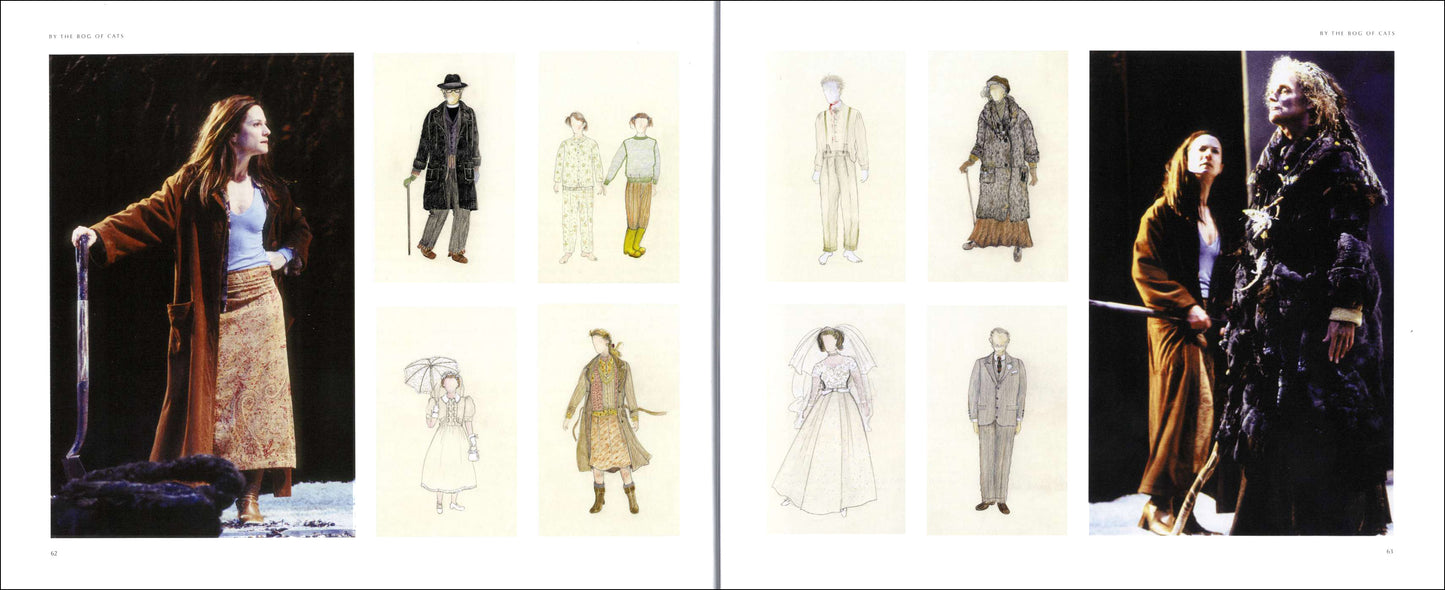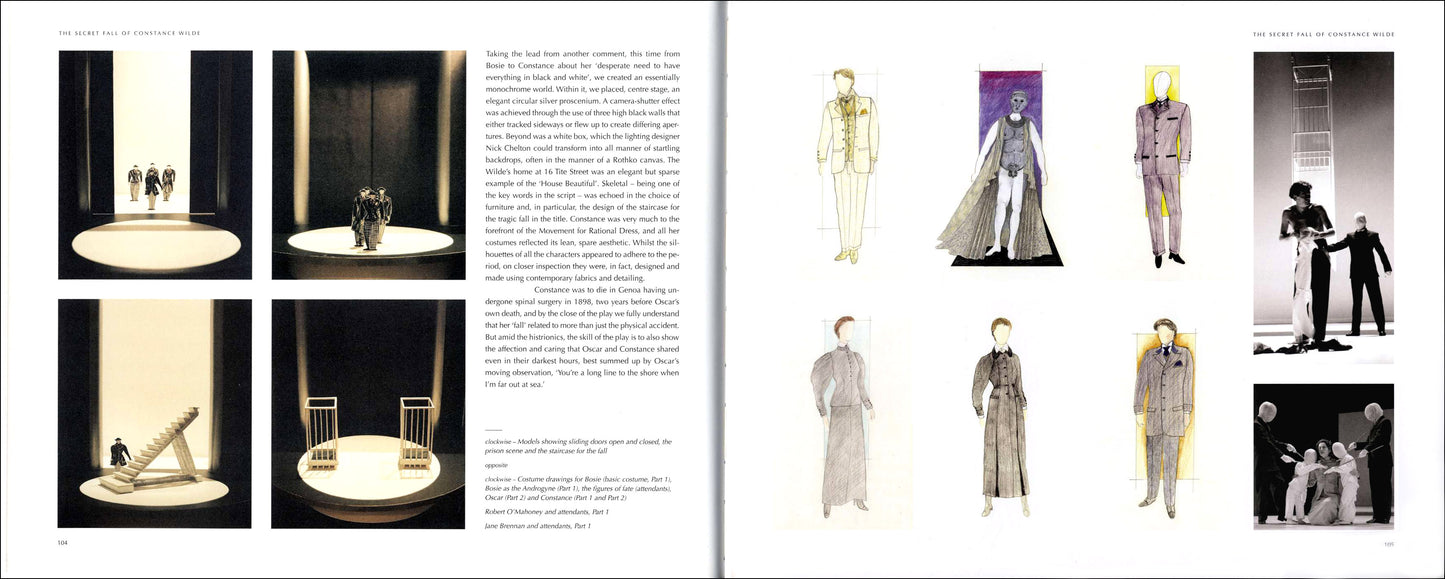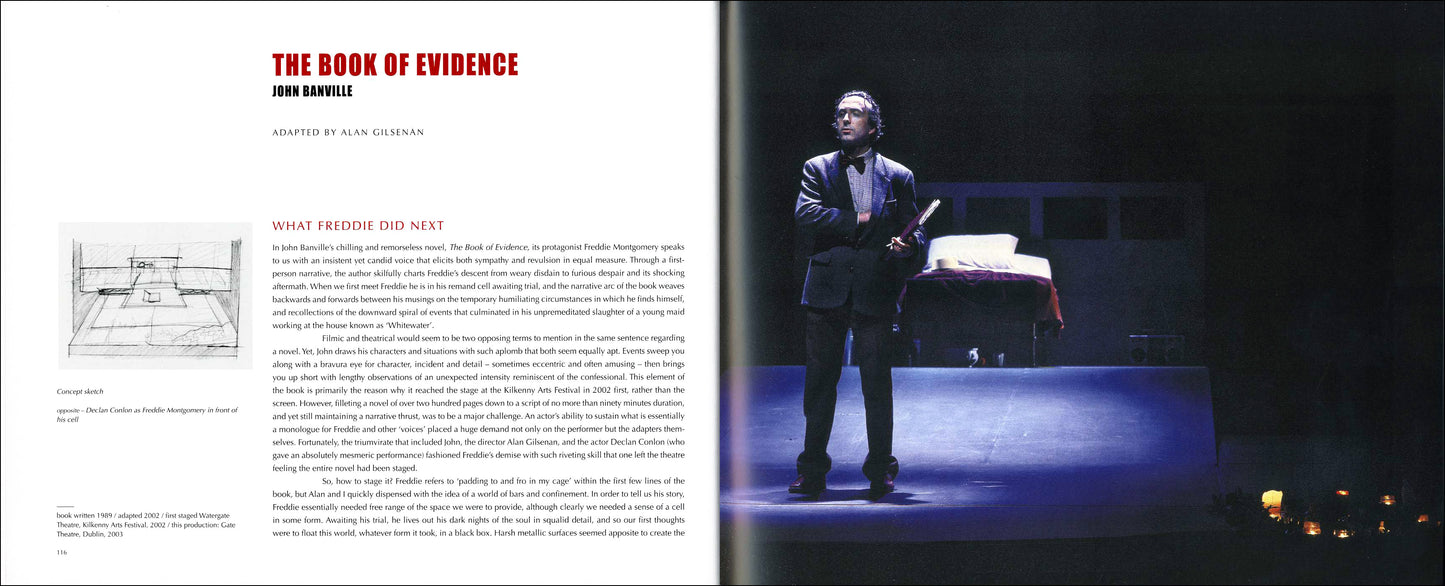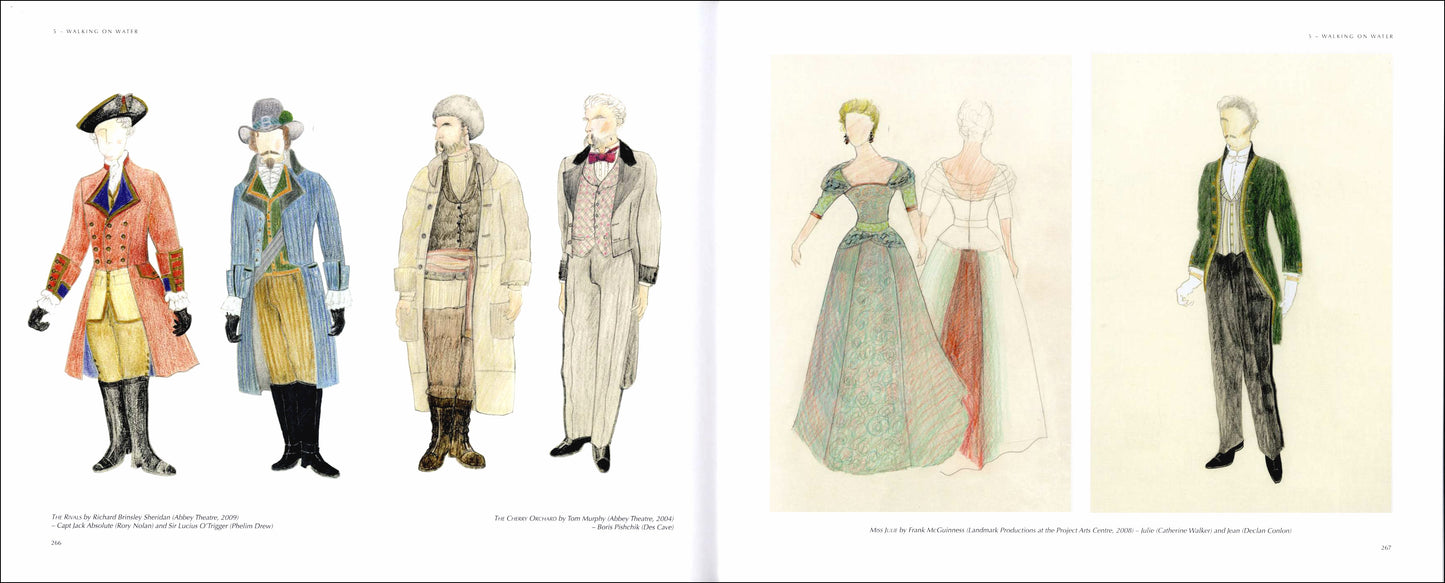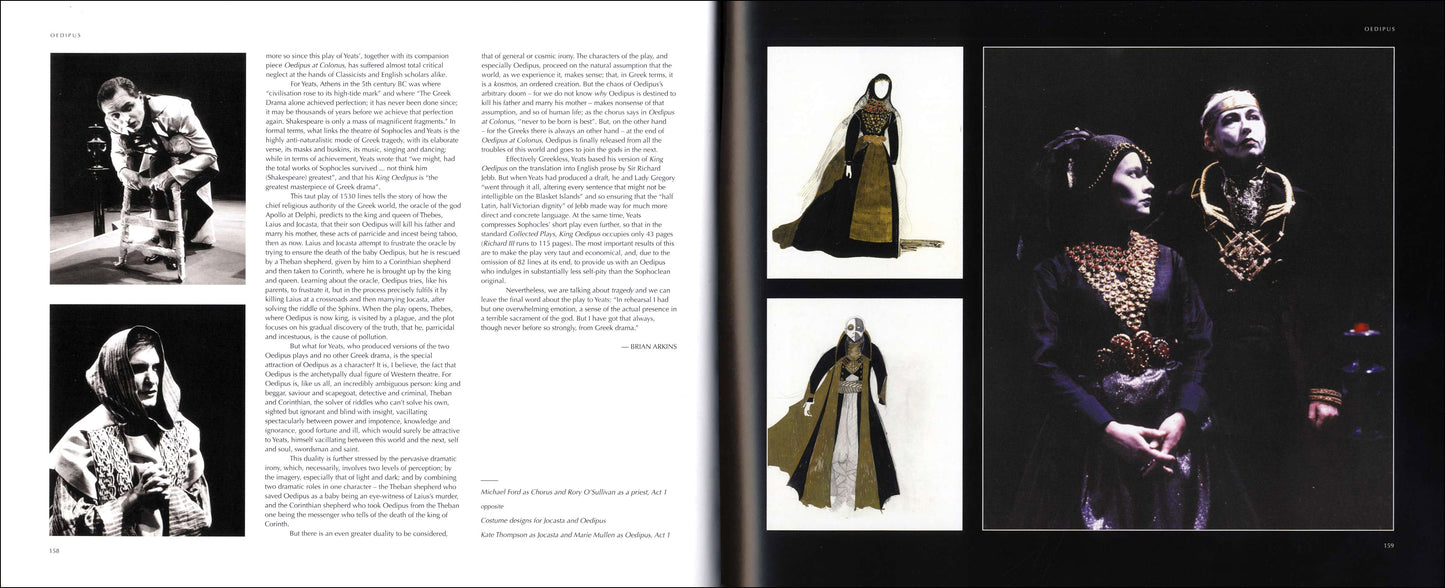Gandon Editions
IRISH THEATRESCAPES – New Irish Plays, Adapted European Plays and Irish Classics
IRISH THEATRESCAPES – New Irish Plays, Adapted European Plays and Irish Classics
Couldn't load pickup availability
Share
by Joseph Vanek
ISBN 978 0946846 825 280pp (hardback) 25x30cm 680 illus
This unique book features 34 productions of new Irish plays, adapted European plays and Irish classics – from the Abbey and Gate theatres in Dublin, to stages in London, New York and California. Each play is comprehensively documented with dramatic production photographs, original design and costume drawings, author’s account, writer’s and/or director’s texts, and theatre programme notes, making it an indispensable book for anyone interested in theatre in Ireland.
The multi-award-winning author, Joe Vanek, designed for most of the major theatre, opera and dance companies in Ireland. He was Director of Design at the Abbey Theatre from 1995 to 1997, and Design Associate for the Wexford Festival Opera from 2006 to 2008.
The foreword is written by Brian Friel, with contributions from 24 writers and directors, including Geraldine Aron, John Banville, Michael Barker-Caven, Ben Barnes, Sebastian Barry, Marina Carr, Michael Colgan, Ingrid Craigie, Alan Gilsenan, Hugo Hamilton, Tom Kilroy, Fiach MacConghail, Frank McGuinness, Tom McIntyre, Patrick Mason and Annie Ryan.
Rarely has a designer raised their head above the parapet and given an account of the entire process from first reading to first night.
Joe Vanek sees plays as others read them. He feels their density. He apprehends their darkness. He catches and celebrates their light ... Vanek’s touch is deep, in most intimate contact with the text’s physical properties, its desire for shape and structure, colour and closeness to make it what it uniquely is.
— Frank McGuinness at the Dublin launch of the book
Irish Theatrescapes is a thing of beauty and endless fascination. It is also a treasure trove of information, beautifully delivered, in the technical and meticulous, often deeply frustrating workings behind a successful theatre production.
— Emer O’Kelly, Sunday Independent
This is a book which is required reading for anyone interested in Irish theatre. It is also beautifully produced. The generous format of the book allows the photographs to bloom. The volume is a treasure-trove of information. The wide range of essays, particularly those by playwrights and directors deliver intriguing insights ... a splendid book.
— Brian McAvera, Irish Arts Review
The great triumph of "Irish Theatrescapes" is its ability to recreate the ephemeral moment of theatre. All the designs in this book are striking.
— Katy Hayes, The Sunday Times
"Irish Theatrescapes", in a beautiful production by Gandon Editions, is such a valuable book for many different readerships, for theatre historians, for designers, for researchers, for punters – anybody who is curious about what design ‘does’ ... I want to offer Joe Vanek and Gandon Editions my hearty congratulations on publishing the first book of its kind in Irish theatre studies, and possibly one of only a handful of books by a theatre designer ever ... This book is a delight.”
— Elaine Sisson at the Galway Arts Festival
_____
EXTRACTS
"The Greeks would have been happy to have worked with Joe Vanek: he would have been as nimble in mighty Epidaurus as he is in the compact Gate or Abbey. He takes possession of a performing area with such discretion, so unobtrusively, with such economy and efficiency that the designer’s presence is minimal and the theatrical effect instantly arresting. No designer is less ostentatious. More than any other designer working in Ireland, he knows his place. I have worked with Joe Vanek on five occasions, and on each occasion he provided a set that offered the play a space it could comfortably inhabit and grow in. But he does something more than provide an abode for a story: by subtle emphasis he nudges the audience into recognising and participating in key aspects of the text. For example, in his memorable and award-nominated designs for Dancing at Lughnasa he gave us a mere hint of a wheatfield. But the impression the audience got was of an entire harvest, a sense of over-ripeness, and a haunting feeling of an uneasy conclusion. The design was so chaste in concept and execution but so rich in sub-plot that it nudged us towards the very core of the play. Work of this calibre is rare. And I consider myself fortunate to have collaborated so often with an artist so astute, so alert and so responsive to the writer’s words."
— from the preface by Brian Friel
"That we wanted a field of wheat to figure in some respect was an early decision, although there was no mention of one in the script, nor did we at the time consider the possible complexities of achieving such an image on stage. After various experiments with angles across the box, we conceived the field as the rear wall of the house itself, rising in an improbable but dramatic wedge, and through the wheat-field we carved a path, cutting diagonally and opening out into the scrubby garden. This was now reduced to little more than an undulating area of dried grass and dusty topsoil. Visitors to the house from the hills (as it were) would be viewed approaching the cottage. However, at an early stage in rehearsals, although Friel was content to go with the design, it became apparent that so subtle is his dramatic balance of entrances and exits that this invented third entrance not indicated in the script would not work. The pathway into the garden was sealed with wheat, and the path became suspended behind the cottage, with plain doorway openings set into the walls on either side of the stage. The tree was to vanish also: this starker and more suggestive world clearly could not support the huge naturalism of a tree hovering at the fringes of the set. In the Abbey Theatre we were fortunate to have lighting slots in the auditorium walls that were positioned above the forestage so that Gerry Evans, Michael’s father, could be seen aloft, scattering leaves, repairing the aerial and generally playing devil-may-care.
The field of wheat and its path served as several visual metaphors which changed subtly through the lighting as the intensity of the russet-hued, softly focussed break-up gobos skimming its surface ebbed and flowed. At times it resembled the smouldering Lughnasa fires that are referred to in the script, whilst at the end of the first act, to the accompaniment of distant jungle drums, it resembled an expanse of veldt baking in the midday sun. Would the path through the field ever be used? Having sealed its garden entrance and relegated it to ‘the path not taken’ (or so it seemed), it suddenly reasserted itself during a final fun in the rehearsal room. Father Jack, still in thrall to the spell of Africa, takes a walk with Kate, his eldest sister, at the close of the first act. As the lights faded and the principal characters became silhouettes, the field flared up and they took their walk through it. Jack tries to woo his sisters to his unconventional beliefs, and the sight of the two of them waist-deep in the golden, shimmering wheat-field was a haunting image that raised the question of who was taking who for a walk, and where were they exactly?"
— on Dancing at Lughnasa, ‘Five Brave Women’, by Joe Vanek
|
CONTENTS FEATURED PLAYS Section 1 – FIGURES IN THE LANDSCAPEAn introduction to ten plays set in the Irish landscape
An introduction to ten plays charting the leading characters’ emotional journeys
Eight classics of international theatre reimagined
An introduction to six major productions of classic Irish plays
The precarious art of making theatre visual |
